Not only is cycling extremely fun, but it’s also highly functional, cheap, sustainable, and healthy.
However, if you’re on the heavier side, a standard bike probably isn’t suit your needs.
But don’t be disheartened—cycling is for everyone, and there are several options available for heavy cyclists, also known as Clydesdale cyclists.
Here’s what you need to know about Clydesdale cyclists, the best bikes for these cyclists, our favorite Clydesdale cycle brands, and general tips that could help you in your cycling journey.
What Is a Clydesdale Cyclist?
Clydesdale cyclists are cyclists who are heavier and bigger in stature, with a weight that often exceeds the weight limit of the standard cycles and bikes.
Also known as plus-sized cyclists, Clydesdale cyclists needn’t only be those who are overweight—the group includes any men weighing over 220 pounds and any women weighing over 160 pounds, as well as extremely tall people with proportionate body mass.
Therefore, this category includes bodybuilders and athletes as well.
Why Bicycling Is Good Even If Your Intention Is Not to Lose Weight
Bicycling is a great way to get into shape, especially if starting with an electric bike.
This low-impact exercise gives you a pretty good workout without placing as much stress on your joints and body as other, more vigorous forms of exercise.

Riding can give you many benefits, such as burning calories, increasing your cardiovascular health and joint mobility, improving your mental health, increasing blood flow to various body parts, and reducing the risk of different health conditions.
Even if you aren’t looking for weight loss, bicycling can give you tons of other advantages:
- Improves your balance and strength
- Builds coordination and improves your flexibility
- Keeps you feeling energetic for a long time
- Improves your endurance and stamina
- Tones your body and improves muscle shape
- Reduces your carbon footprint as it is better for the environment and doesn’t release harmful fumes and exhaust into the air
- Bikes are cheaper and can save you the cost of fuel, transport, maintenance, parking, garage, and so forth that you would usually incur when using vehicles
What Type of Bike Is Ideal for Overweight Cyclists?
Apart from not being designed to withstand heavier weights, standard bikes can be extremely tiring and painful for heavy cyclists, as they can cause a lot of stress on the joints and muscles.
Fortunately, there are plenty of specialized bikes available for heavy cyclists.
These bikes are built to withstand weights between 300 and 550 pounds (compared to the 150-200 that standard bikes can support), with a stable frame and wheels that enable heavy riders to use them easily, safely, and for the long term.
For each type of bike, check the weight limit, and if a bike is on your weight limit, you can solve the weight limit problem by upgrading the bike with more sturdy wheels.
Some bike types that Clydesdale cyclists can use, along with their pros and cons, are listed below.
Mountain Bikes
Mountain bikes are durable, high-performance bikes built specifically for off-roading. Therefore, these bikes are more complicated to handle, heavier, and not meant for on-road usage.
Pros
- These bikes have excellent grip on uneven terrain thanks to a frame design that enables this.
- They’re highly stable as they have great suspension and broad knobs that make quick work of mud and dirt paths while also absorbing riding shock efficiently.
Cons
- Mountain bikes are hard to control on walkways and normal paths.
- Though the suspension is great, this decreases the pedaling efficiency.
- They’re heavy bikes, which can make them hard to handle.
Hybrid Bikes
Hybrid bikes combine the features of two or more cycles, usually touring, mountain, and specialized road bikes. They’re versatile bikes that can take both on and off-road usage.
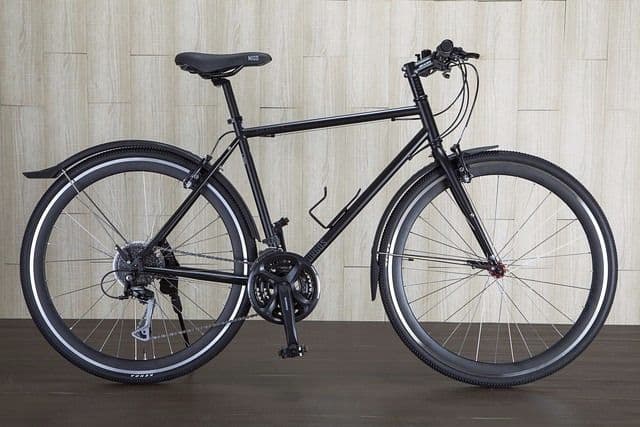
Pros
- Hybrid bikes are comfortable and sturdy, with straight, high handles that provide excellent support.
- The seat/saddle is well-padded and thick for comfortable riding.
- It works great on dirt paths.
- These bikes are quite fast thanks to a sleek build.
Cons
- The aerodynamics are lacking compared to road bikes.
- These bikes are given to punctures.
Fat Bikes
Fat bikes, also known as fat tire, fat-tire bikes, and snow-tire bikes, feature oversized tires and are designed for off-roading.
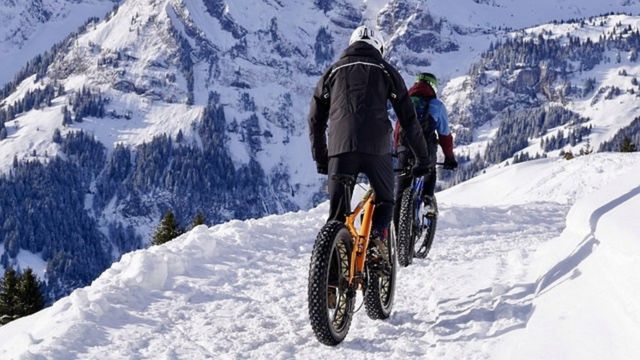
With low ground pressure, the tires help the bike navigate rough, unstable, soft, sandy, muddy, snowy, and boggy terrain.
Pros
- Fat bikes can easily navigate various terrain, including rocky terrain.
- Their big tires make them easy to ride.
Cons
- Beginners may find them hard to control.
- These bikes can be quite heavy.
- They’re not meant for on-road usage, which means they are extremely slow on normal roads.
Electric Bikes
Electric bikes feature an additional motor that provides extra energy to move the bike. These motors complement the peddling done by the cyclist.
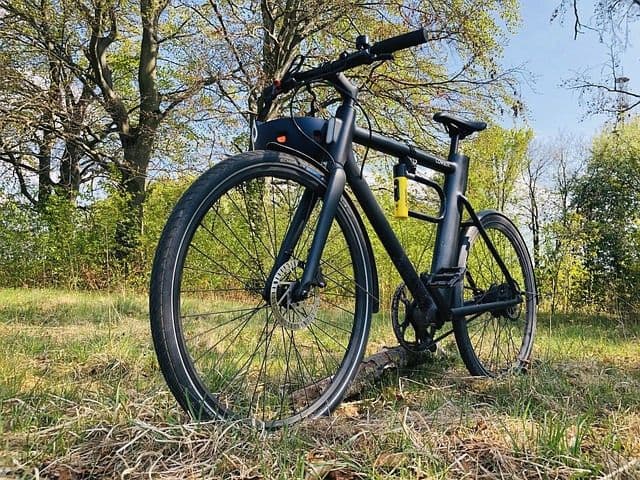
Pros
- Electric bikes are eco-friendly.
- They minimize the effort riders need to exert, making them easier to handle and navigate, especially for heavy riders.
- They are faster, more powerful, and can travel longer distances than other bikes.
- The usage and maintenance costs involved are minimal.
Cons
- While the cost of using these is low, the price tag is relatively high.
- They are expensive to repair.
Cruiser Bikes
As the name suggests, these bikes are meant for cruising! Cruiser bikes are popularly used for recreational cycling.
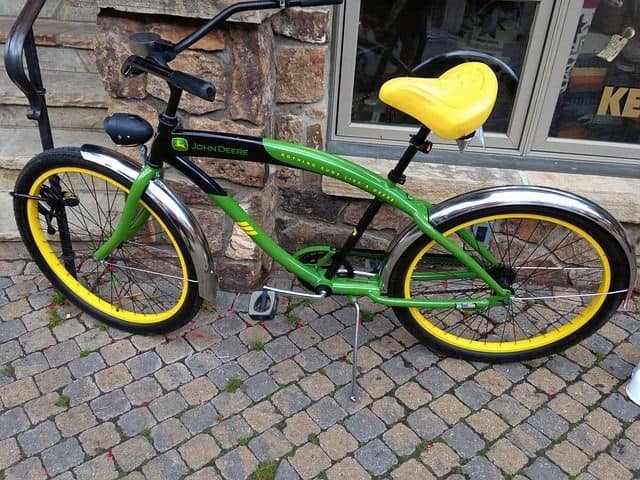
Pros
- Cruiser bikes are easy to control.
- They’re highly stable.
- To reduce friction while riding, they have narrow tires and wide wheels.
- They’re flexible and fast.
- They’re extremely comfortable to ride on.
Cons
- These bikes are not built for rough usage.
- They’re not very powerful.
- Their heavy wheels make them slow bikes.
Now that we know which bikes work best for heavy cyclists let’s look at what components Clydesdale cyclists need to pay attention to.
Bike Components That You Need If You Are over Clydesdale Cyclist
Clydesdale cyclists need equipment that can support them comfortably and sustainably.
Here’s a list of bike parts you need for the best riding experience if you’re a Clydesdale cyclist.
Choose Steel or Titanium over Carbon
For heavier cyclists, metal frames are ideal, especially durable metals like steel, aluminum, and titanium.
These are sturdy and durable metals, unlike carbon fiber.
Though carbon fiber is relatively strong, it’s not as strong as steel, aluminum, or titanium.
When it comes to the frame size, choose one based on the length of your legs.
Take off your shoes, stand straight with your feet slightly apart, and measure the inseam (length from the crotch to the ground).
Then, multiply this number by 0.70 to get your frame size in centimeters for a road bike and 0.685 for a mountain bike.
Typically, this should fall between L and 4XL, covering people upwards of five feet and ten inches.
Strong Wheels Are Critical
Wheel Size
Sturdy wheels are crucial for Clydesdale cyclists.
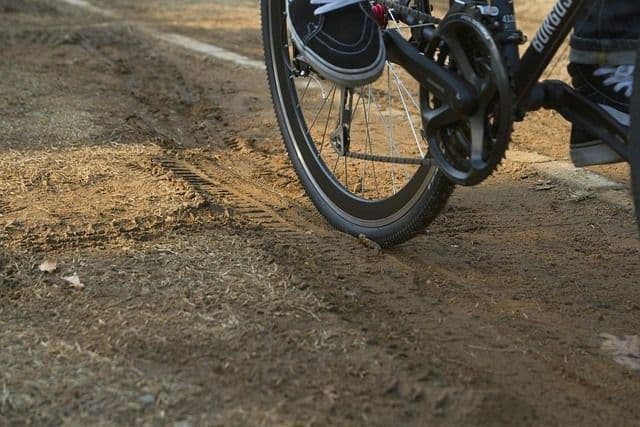
Double-rimmed small wheels with more spokes than other types of wheels (at least 32 spokes), especially in the rear wheel, are sturdy and capable of efficiently balancing the weight of a Clydesdale cyclist.
In addition to stable wheels, you need strong, thick tires to support your needs.
Choose a wheel between 26 and 29 inches for a comfortable ride.
Lighter wheels will make the bike faster, while heavier wheels give you comfort, stability, and control.
Rim Materials
Bike rims are typically made of aluminum, carbon fiber, and steel.
Carbon fiber is the costlier, lighter, and more precise option, providing better speed, control, and acceleration.
Steel is generally not recommended for heavy riders, even if coated to prevent rust.
It’s also quite heavy.
Aluminum rims are sturdy, durable, and suitable for rough terrain and gravel, capable of absorbing shock.
However, they can cause cracks in the spoke nipples on the rear wheel.
Brakes
Mechanical disc brakes are recommended for heavy cyclists as they’re extremely powerful, which is necessary for Clydesdale cyclists (the heavier the rider, the more powerful the brakes must be).
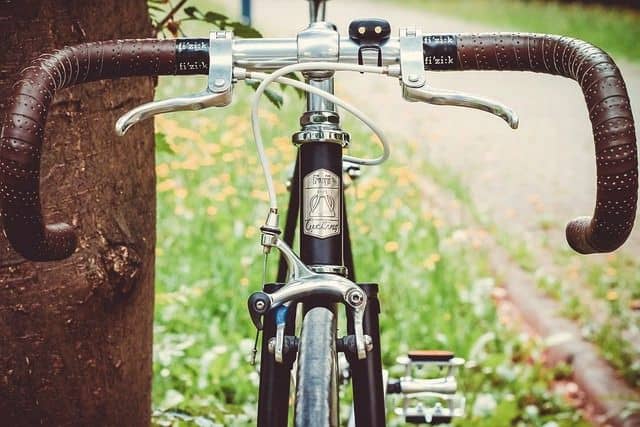
Thinner or Wider Saddle
A wide, comfortable saddle is recommended if you plan to ride long distances on your bike.
If you intend to race, a narrow saddle is ideal, as it’s more streamlined and lighter.

Thinner Saddle
Pros
- Thinner saddles are suitable for racing.
- These saddles are ideal for long distances.
Cons
- These saddles are not suited for short rides.
- They can get quite uncomfortable and unbalanced.
Wider Saddle
Pros
- These are comfortable and balance your weight well.
- They are spacious.
Cons
- Wide saddles, if too wide, can cause rubbing and chafing.
- Wide saddles reduce aerodynamics and pedal performance.
Look For Comfortable Clothing
If you plan to cycle often, investing in cycling gear and clothing that makes riding more comfortable is a good idea.
Comfortable clothing can make cycling easier and more relaxed, allowing greater flexibility and control.
For Clydesdale cyclists, T-shirts made of lightweight, sweat-absorbent material and padded shorts (like mountain bike shorts) are recommended; the latter allows some space between the rider and the saddle, making riding more comfortable.
Companies That Specialized in Heavy Riders
Nowadays, many brands specialize in engineering bikes meant for heavy riders.
Some of the popular, reliable options include:
- Rad Power Bikes
- Ariel Rider
- Aventon
- Zize Bikes
- Juiced Bikes
- Lectic
- Cyrusher
- Biktrix
- Ride1Up
- Himiway
- Mongoose Bikes
- Clydesdale Bicycles
Conclusion
Clydesdale cyclists now have various options at their disposal, but overall, if you’re a Clydesdale cyclist, opt for mountain, fat, or electric bikes.
With sturdy, reliable components, these bikes are better built to support heavy riders.
Before investing in your bike, don’t forget to check that the various components match your needs, from the wheels to the handle.